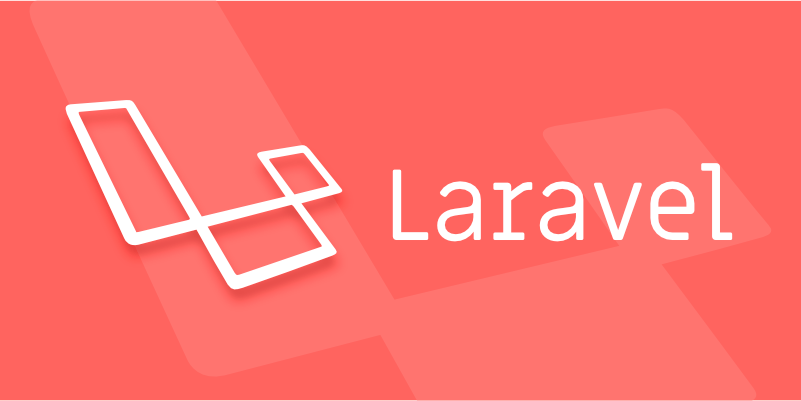Generating and using database factories in Laravel.
Jul 16, 2025 am 02:05 AMDatabase factories are tools in Laravel for generating model fake data. It quickly creates the data required for testing or development by defining field rules. For example, after using php artisan make:factory to generate factory files, sets the generation logic of fields such as name and email in the definition() method, and creates records through User::factory()->create(); 1. Supports batch generation of data, such as User::factory(10)->create(); 2. Use make() to generate uninvented data arrays; 3. Allows temporary overwriting of field values; 4. Supports association relationships, such as automatically creating associated articles; 5. Provides state functions to define specific scenario data; 6. Supports JSON field serialization processing.

In Laravel, Database Factory is a very practical tool, especially when you need to quickly generate test data. It helps you define the data structure of your model and create a large amount of simulated data in a neat way for development or testing environments.

What is a database factory?
Database factories are essentially blueprints for generating fake data for Eloquent models. You can understand it as a template to tell Laravel what fields should be filled in and how to fill in when you want to "create" a user record. This data can be used for unit testing or to populate the development stage database.
Laravel comes with its own Faker library, so when you write a factory, you can directly use it to generate common data such as random names, email addresses, and other common data.

How to generate a factory?
You can use the Artisan command to generate the corresponding factory file for a model:
php artisan make:factory UserFactory --model=User
This command will create a UserFactory.php file in database/factories directory. Open it and you will see a basic structure with a definition() method that returns the "generate rules" of each field of the model.

For example, you can write this:
public function definition()
{
Return [
'name' => fake()->name(),
'email' => fake()->unique()->safeEmail(),
'password' => bcrypt('password'),
];
} Here, the fake() function is used to call Faker to generate random names and unique mailboxes. Note that if you want certain fields not to be repeated, remember to add unique() , otherwise the insertion may fail.
How to use factories to generate data?
After the factory is generated, you can use it in Tinker or Seeder or test code.
For example in Tinker:
php artisan tinker
Then enter:
User::factory()->create();
This will create a user and save it to the database according to your factory definition.
If you want to generate multiple users, you can add parameters:
User::factory(10)->create();
This creates 10 user records.
If you just want to get the data array instead of directly repository, you can use make() :
User::factory(5)->make();
This method is not written to the database and is suitable for temporary use in testing.
In addition, you can temporarily overwrite the values of certain fields:
User::factory()->create([
'name' => 'Test User',
]);In this way, the name field will not go to Faker, but will be fixed.
What else can the factory do?
Association relationship : You can let the factory automatically create association data, for example, a user has an article:
User::factory()->hasPosts(3)->create();
This requires that you have defined PostFactory and that there is a correct Eloquent relationship between User and Post.
States : You can define some "states" to indicate data changes in a specific situation. For example, a disabled user:
public function disabled() { return $this->state(fn (array $attributes) => ['active' => false]); }When using:
User::factory()->disabled()->create();
Serialized fields : If your field is of JSON type, such as
meta, you can directly construct an array in the factory, and Laravel will automatically convert it to JSON storage.- If you often use Tinker to create data, it is recommended to write commonly used factory calls into small functions or alias to save time.
- When using
factory()->count(n), be careful not to insert too much data at once, as it may lag or even fail. - The factory association between different models must be ensured to be correct, otherwise errors are prone to errors.
Tips
Basically that's it. A factory is not a profound thing, but using it well can really save a lot of effort.
The above is the detailed content of Generating and using database factories in Laravel.. For more information, please follow other related articles on the PHP Chinese website!

Hot AI Tools

Undress AI Tool
Undress images for free

Undresser.AI Undress
AI-powered app for creating realistic nude photos

AI Clothes Remover
Online AI tool for removing clothes from photos.

Clothoff.io
AI clothes remover

Video Face Swap
Swap faces in any video effortlessly with our completely free AI face swap tool!

Hot Article

Hot Tools

Notepad++7.3.1
Easy-to-use and free code editor

SublimeText3 Chinese version
Chinese version, very easy to use

Zend Studio 13.0.1
Powerful PHP integrated development environment

Dreamweaver CS6
Visual web development tools

SublimeText3 Mac version
God-level code editing software (SublimeText3)

Hot Topics
 What are policies in Laravel, and how are they used?
Jun 21, 2025 am 12:21 AM
What are policies in Laravel, and how are they used?
Jun 21, 2025 am 12:21 AM
InLaravel,policiesorganizeauthorizationlogicformodelactions.1.Policiesareclasseswithmethodslikeview,create,update,anddeletethatreturntrueorfalsebasedonuserpermissions.2.Toregisterapolicy,mapthemodeltoitspolicyinthe$policiesarrayofAuthServiceProvider.
 What are routes in Laravel, and how are they defined?
Jun 12, 2025 pm 08:21 PM
What are routes in Laravel, and how are they defined?
Jun 12, 2025 pm 08:21 PM
In Laravel, routing is the entry point of the application that defines the response logic when a client requests a specific URI. The route maps the URL to the corresponding processing code, which usually contains HTTP methods, URIs, and actions (closures or controller methods). 1. Basic structure of route definition: bind requests using Route::verb('/uri',action); 2. Supports multiple HTTP verbs such as GET, POST, PUT, etc.; 3. Dynamic parameters can be defined through {param} and data can be passed; 4. Routes can be named to generate URLs or redirects; 5. Use grouping functions to uniformly add prefixes, middleware and other sharing settings; 6. Routing files are divided into web.php, ap according to their purpose
 How do I run seeders in Laravel? (php artisan db:seed)
Jun 12, 2025 pm 06:01 PM
How do I run seeders in Laravel? (php artisan db:seed)
Jun 12, 2025 pm 06:01 PM
Thephpartisandb:seedcommandinLaravelisusedtopopulatethedatabasewithtestordefaultdata.1.Itexecutestherun()methodinseederclasseslocatedin/database/seeders.2.Developerscanrunallseeders,aspecificseederusing--class,ortruncatetablesbeforeseedingwith--trunc
 How do I run tests in Laravel? (php artisan test)
Jun 13, 2025 am 12:02 AM
How do I run tests in Laravel? (php artisan test)
Jun 13, 2025 am 12:02 AM
ToruntestsinLaraveleffectively,usethephpartisantestcommandwhichsimplifiesPHPUnitusage.1.Setupa.env.testingfileandconfigurephpunit.xmltouseatestdatabaselikeSQLite.2.Generatetestfilesusingphpartisanmake:test,using--unitforunittests.3.Writetestswithmeth
 What is the purpose of the artisan command-line tool in Laravel?
Jun 13, 2025 am 11:17 AM
What is the purpose of the artisan command-line tool in Laravel?
Jun 13, 2025 am 11:17 AM
Artisan is a command line tool of Laravel to improve development efficiency. Its core functions include: 1. Generate code structures, such as controllers, models, etc., and automatically create files through make: controller and other commands; 2. Manage database migration and fill, use migrate to run migration, and db:seed to fill data; 3. Support custom commands, such as make:command creation command class to implement business logic encapsulation; 4. Provide debugging and environment management functions, such as key:generate to generate keys, and serve to start the development server. Proficiency in using Artisan can significantly improve Laravel development efficiency.
 What are controllers in Laravel, and what is their purpose?
Jun 20, 2025 am 12:31 AM
What are controllers in Laravel, and what is their purpose?
Jun 20, 2025 am 12:31 AM
The main role of the controller in Laravel is to process HTTP requests and return responses to keep the code neat and maintainable. By concentrating the relevant request logic into a class, the controller makes the routing file simpler, such as putting user profile display, editing and deletion operations in different methods of UserController. The creation of a controller can be implemented through the Artisan command phpartisanmake:controllerUserController, while the resource controller is generated using the --resource option, covering methods for standard CRUD operations. Then you need to bind the controller in the route, such as Route::get('/user/{id
 How do I start the Laravel development server? (php artisan serve)
Jun 12, 2025 pm 07:33 PM
How do I start the Laravel development server? (php artisan serve)
Jun 12, 2025 pm 07:33 PM
To start the Laravel development server, use the command phpartisanserve, which is provided at http://127.0.0.1:8000 by default. 1. Make sure that the terminal is located in the project root directory containing the artisan file. If it is not in the correct path, use cdyour-project-folder to switch; 2. Run the command and check for errors. If PHP is not installed, the port is occupied or file permissions are problematic, you can specify different ports such as phpartisanserve--port=8080; 3. Visit http://127.0.0.1:8000 in the browser to view the application homepage. If it cannot be loaded, please confirm the port number, firewall settings or try.
 How do I use Laravel's validation system to validate form data?
Jun 22, 2025 pm 04:09 PM
How do I use Laravel's validation system to validate form data?
Jun 22, 2025 pm 04:09 PM
Laravelprovidesrobusttoolsforvalidatingformdata.1.Basicvalidationcanbedoneusingthevalidate()methodincontrollers,ensuringfieldsmeetcriterialikerequired,maxlength,oruniquevalues.2.Forcomplexscenarios,formrequestsencapsulatevalidationlogicintodedicatedc






